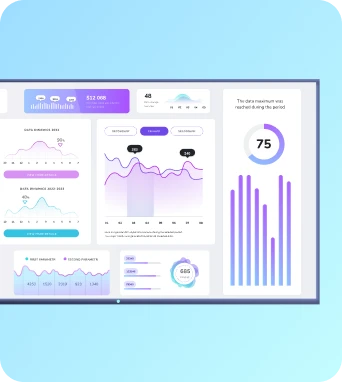Bandwidth-adaptive media delivery
Bandwidth-adaptive media delivery is a method that dynamically adjusts video and image encoding, resolution and bitrate in response to real-time network conditions. Designed for digital signage and TV dashboards, it preserves playback continuity and brand visuals while minimising stalls, data waste and the need for manual quality overrides across distributed display networks.
Bandwidth-adaptive media delivery
How adaptive delivery works in practice
At a technical level, bandwidth‑adaptive delivery combines several elements: multiple encoded renditions of each asset, a delivery protocol that supports client‑side switching, and telemetry to detect network conditions. Assets are preprocessed into a set of quality tiers—commonly differing by resolution, bitrate and compression profile—and stored on a content delivery network or edge cache. The player on each screen measures throughput and latency, then requests the highest quality rendition the link can sustain. If conditions deteriorate, the player seamlessly switches to a lower tier to avoid stalls; if conditions improve, it scales back up to restore image fidelity. This approach is standard for streaming video but is equally applicable to image sequences and animated assets used in digital signage, where abrupt freezes or excessive data charges are especially costly. Implementation choices matter for signage operators. Adaptive delivery can be delivered via HTTP adaptive streaming protocols such as HLS or DASH, or by using segmented progressive downloads combined with smart client logic for JPEG/WebP tiles and sprite sheets. For networks with strict firewall rules, signed URLs and tokenised requests maintain security while enabling caching. Integration with a central management service lets administrators define policy—for example, force maximum quality over corporate LANs while enforcing conservative tiers on cellular backup links—and log playback quality to track experience across the estate. Correctly configured, adaptive delivery removes much manual tuning and reduces the need to push separate assets for each site.
Operational considerations and benefits
The benefits of bandwidth‑adaptive delivery for signage networks are practical and measurable. Primary gains include fewer interrupted playlists, lower peak bandwidth use and reduced recurring CDN or cellular data costs. For multi‑tenant sites or locations with shared networks, adaptive delivery prevents a display from monopolising capacity and degrading other services. From an operations perspective, fewer incidents of frozen content reduce helpdesk tickets and onsite visits, while telemetry from adaptive players provides actionable insight into problem links, enabling targeted network upgrades or configuration changes. There are trade‑offs and governance points to consider. Operators must define acceptable visual thresholds so that branding remains recognisable at lower tiers, and establish policies for when assets should be deferred or prefetched. Caching strategy affects responsiveness: edge caching reduces latency but requires careful purging logic when assets update frequently. Monitoring and alerting should surface both playback errors and sustained quality downgrades to trigger remediation. For teams using a platform such as Fugo.ai, adaptive delivery ties into content scheduling and device management, allowing rules to automatically select lower‑bandwidth renditions during peak network load or for devices on metered connections, while restoring higher quality when favourable conditions return.
Next steps for deployment
Keep the learning going...
Bandwidth utilization tracking
Bandwidth utilization tracking records and analyses the volume, timing and patterns of network traffic used by digital signage devices and TV dashboards. It shows per-player consumption, content-related peaks and trends, enabling operators to detect playback bottlenecks, enforce quotas, and make data-driven decisions for capacity planning and content scheduling.
Bandwidth-efficient streaming
Bandwidth-efficient streaming is an approach to delivering video and visual content that minimises network load while preserving perceived quality. It uses adaptive bitrate encoding, intelligent caching, local playback and smart delivery strategies to reduce bandwidth consumption on digital signage networks while keeping playback smooth and predictable.
Beacon-triggered ads
Beacon-triggered ads are location-aware digital signage messages activated by nearby Bluetooth Low Energy (BLE) beacons. They deliver timely, contextual promotions or information to TV dashboards and displays, enabling zone-based targeting and moment-specific content changes for retail, hospitality, workplace and event environments managed via Fugo.ai.



